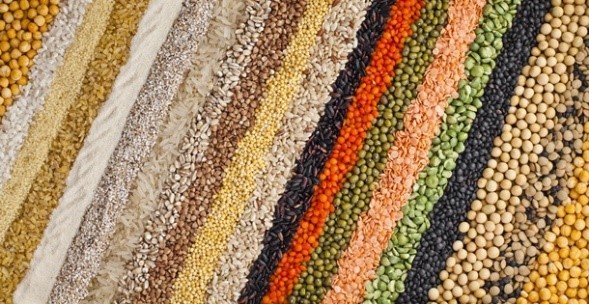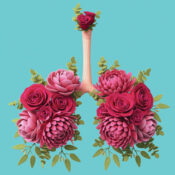We are pleased to bring you this regular column by Dr. David Creel, a licensed psychologist, certified clinical exercise physiologist and registered dietitian. He is also credentialed as a certified diabetes educator and the author of A Size That Fits: Lose Weight and Keep it off, One Thought at a Time (NorLightsPress, 2017). See all of David Creel’s articles here.
Last week I offered four eating tips to help you lose weight and keep it off in a healthy manner. Here are three more helpful hints to help you manage calories and develop sound eating habits.
5. Choose Whole Grains
Our bodies like to operate on sugar (glucose), especially when we exercise at high intensities. When we eat whole grains, complex carbohydrates break down and sugar slowly enters our bloodstream, ready for use by our brain and working muscles. Whole grain foods such as wheat bread, brown rice, quinoa, and oats are rich in vitamins and minerals as well as fiber. Whole grains can be slightly higher in calories, which you will see if you compare white bread to whole wheat bread, because they contain the germ of the seed — a source of healthy fat. Despite the slightly higher calories, you’ll probably feel fuller longer because the whole grain fiber slows the rate at which food empties from the stomach. In addition, many foods made with refined grains (crackers, muffins, pastries, cookies, etc.) have added fats and sugars that boost the calorie count and increase our drive to overeat them.
6. Eat Lean Protein at Meals and Snacks
Calorie-for-calorie, protein tends to be more satiating than fat or carbohydrates. If I asked you to rate your fullness after eating 300 calories of pasta with red sauce (carbohydrates) versus the same calories worth of cheesecake (a tiny piece loaded with fat), compared to boneless skinless chicken breast (almost entirely protein), which would fill you up the most? Studies show it would be the chicken breast. Protein is important to help us feel satisfied after eating. Thus, adding an egg to your breakfast or a low-fat cheese stick to your afternoon snack may help curb overeating later in the day.
7. Watch for Hidden Fat
For several summers during college I worked breakfast and lunch room service in a high-end hotel. Each morning, dressed in my white Oxford shirt, black pants, and bow tie, I would grab something quick to eat between orders. Oatmeal was my favorite. I wasn’t sure why, but this was the best oatmeal ever. I thought maybe the hotel ordered exotic oats from overseas, which would explain the silky texture and rich flavor. Each morning I scarfed down a bowl or two of what I thought was the healthiest thing I could get my hands on. One morning I happened to enter the kitchen when Ms. B, as we called her, was making a large batch of the good stuff. Ms. B was a sweet black lady from Alabama who called everyone Honey. She seemed to cook from the depths of her soul and her food tasted better because you know she prepared it just for you. I can only imagine she learned to cook from her mother, who learned to cook from her mother.
Having family from the South, I knew all about the fat-is-flavor style of cooking. But I couldn’t believe my eyes when I walked in on Ms. B mid-oatmeal and saw her pouring a large carton of half-and-half creamer into the oats. I never imagined someone could do that to oatmeal! That day I learned a valuable lesson about hidden fat, especially when dining out. People often underestimate the calories in food because they don’t account for added fat, especially when others prepare it. Remember, one gram of fat has nine calories. A teaspoon of butter contains about four grams of fat or 36 calories. A stick of butter has over 800 calories (think cookies), compared to an equally sized banana of around 90 calories.
Follow This Diet
In summary, there is no best diet for weight loss and weight loss maintenance. But consuming a diet that’s rich in vegetables, lean protein sources, fruits, whole grains, and low-fat dairy will make weight loss more likely and give you the best chance of preventing diet-related diseases. In addition, eating a balanced diet can make you feel more energetic and give you the fuel to exercise consistently.
Come back each week for more healthy weight loss advice from Dr. David Creel.
Become a Saturday Evening Post member and enjoy unlimited access. Subscribe now




Comments
Love my oatmeal too! Thanks for the healthy eating and healthy diet tips.